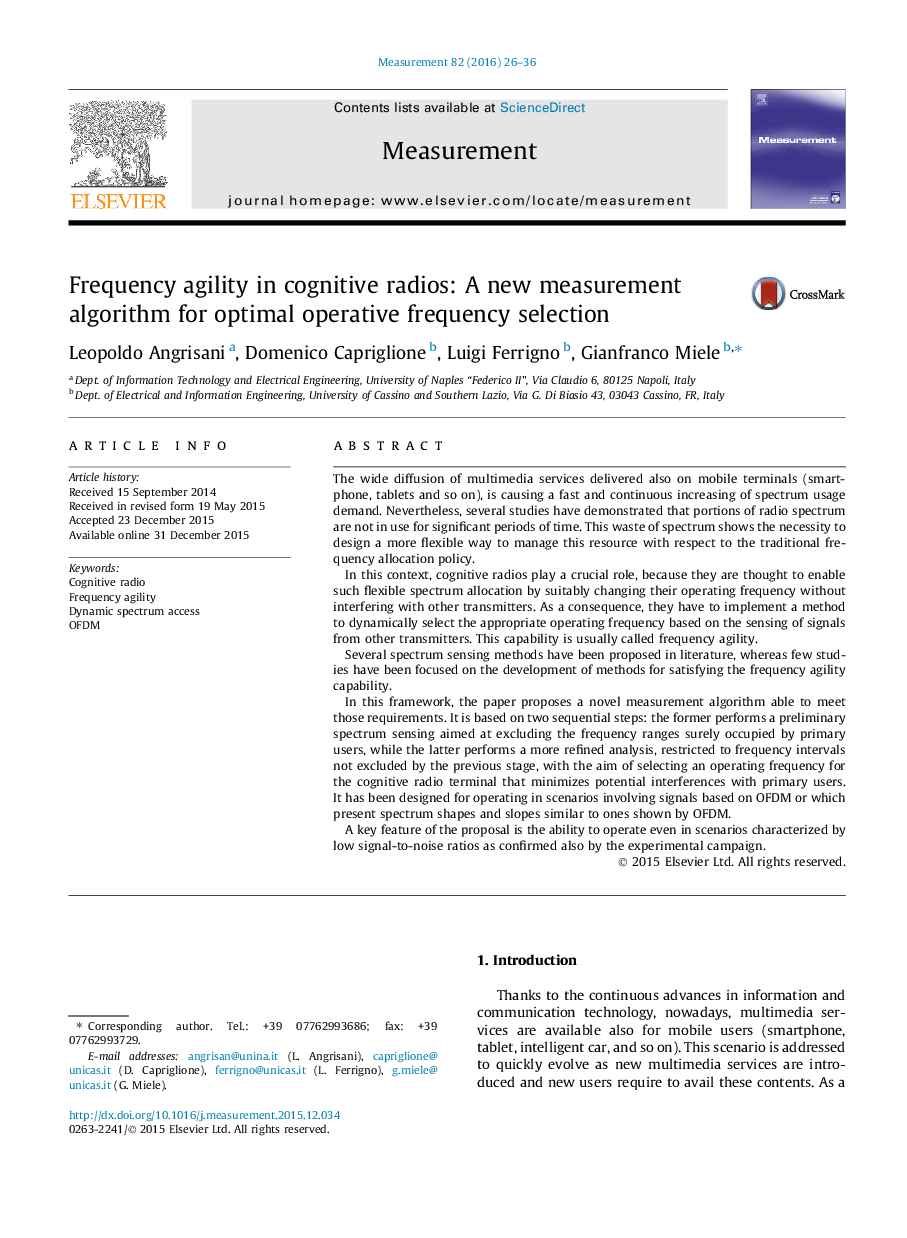| Article ID | Journal | Published Year | Pages | File Type |
|---|---|---|---|---|
| 730860 | Measurement | 2016 | 11 Pages |
•A new measurement algorithm for frequency selection in cognitive radio is proposed.•A wideband analysis, able to operate in blind scenarios, is proposed.•The algorithm’s performance is assessed through a comprehensive set of simulations.•A test-bed is arranged for proving the effectiveness of the proposed algorithm.
The wide diffusion of multimedia services delivered also on mobile terminals (smart-phone, tablets and so on), is causing a fast and continuous increasing of spectrum usage demand. Nevertheless, several studies have demonstrated that portions of radio spectrum are not in use for significant periods of time. This waste of spectrum shows the necessity to design a more flexible way to manage this resource with respect to the traditional frequency allocation policy.In this context, cognitive radios play a crucial role, because they are thought to enable such flexible spectrum allocation by suitably changing their operating frequency without interfering with other transmitters. As a consequence, they have to implement a method to dynamically select the appropriate operating frequency based on the sensing of signals from other transmitters. This capability is usually called frequency agility.Several spectrum sensing methods have been proposed in literature, whereas few studies have been focused on the development of methods for satisfying the frequency agility capability.In this framework, the paper proposes a novel measurement algorithm able to meet those requirements. It is based on two sequential steps: the former performs a preliminary spectrum sensing aimed at excluding the frequency ranges surely occupied by primary users, while the latter performs a more refined analysis, restricted to frequency intervals not excluded by the previous stage, with the aim of selecting an operating frequency for the cognitive radio terminal that minimizes potential interferences with primary users. It has been designed for operating in scenarios involving signals based on OFDM or which present spectrum shapes and slopes similar to ones shown by OFDM.A key feature of the proposal is the ability to operate even in scenarios characterized by low signal-to-noise ratios as confirmed also by the experimental campaign.
